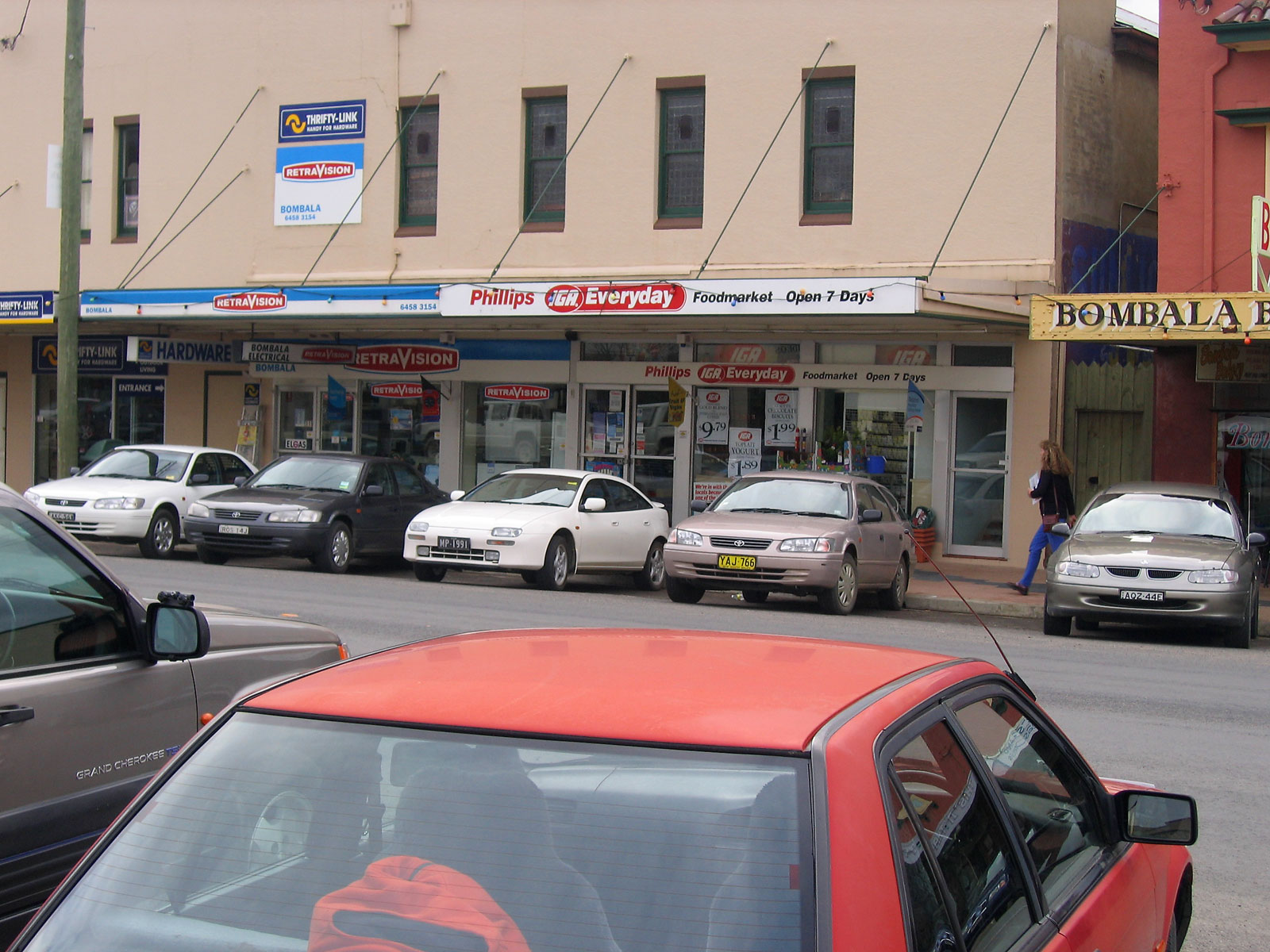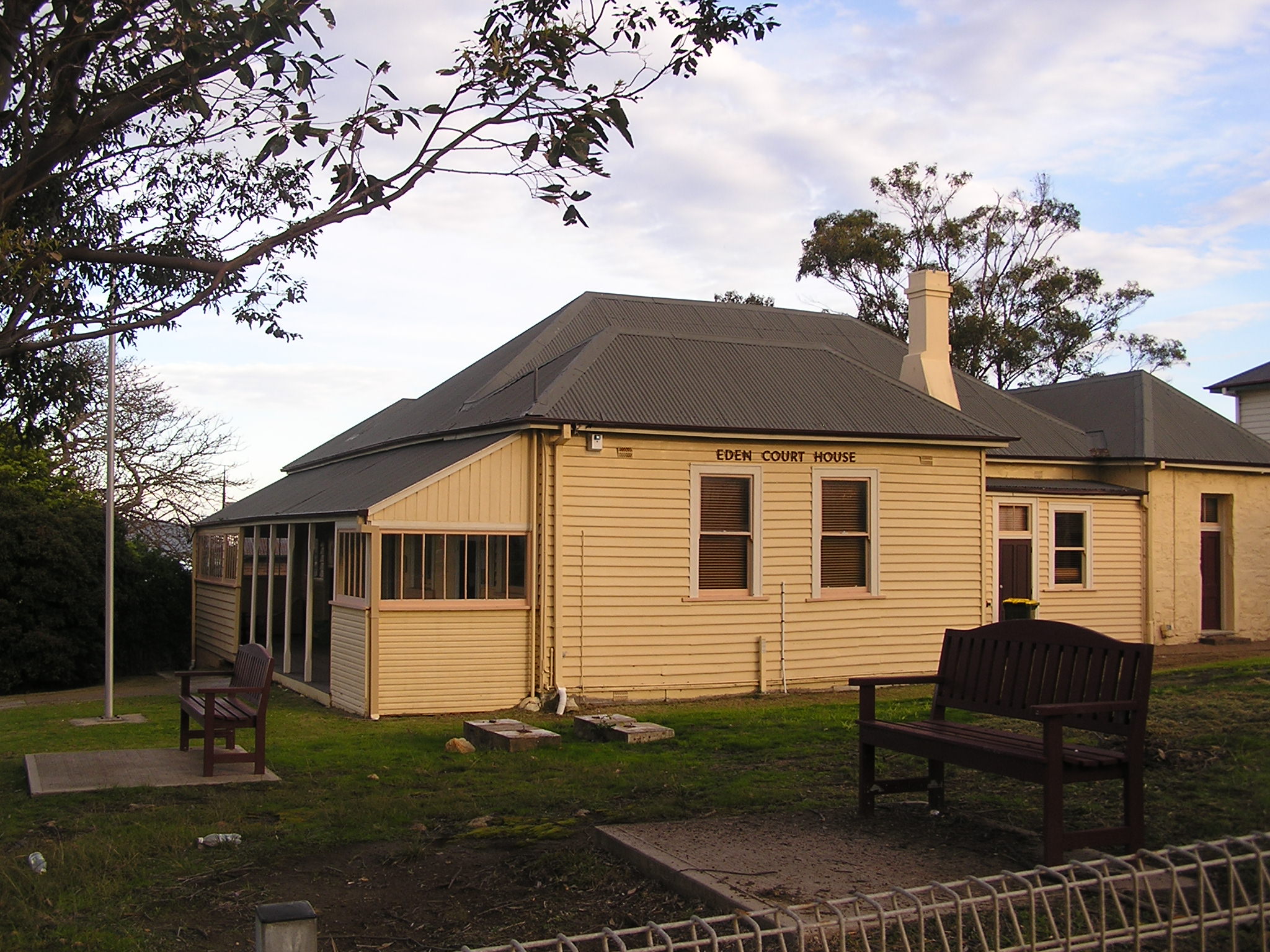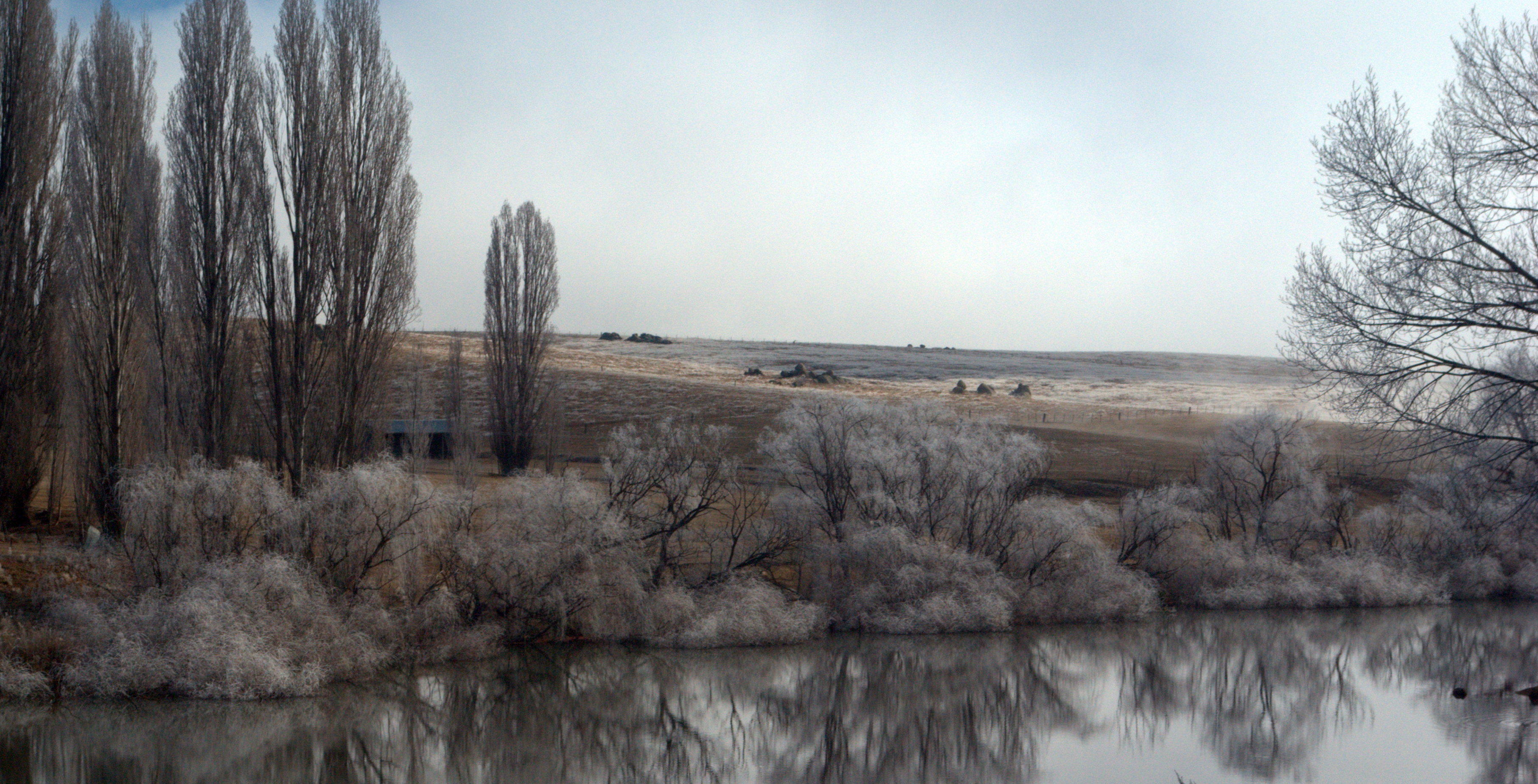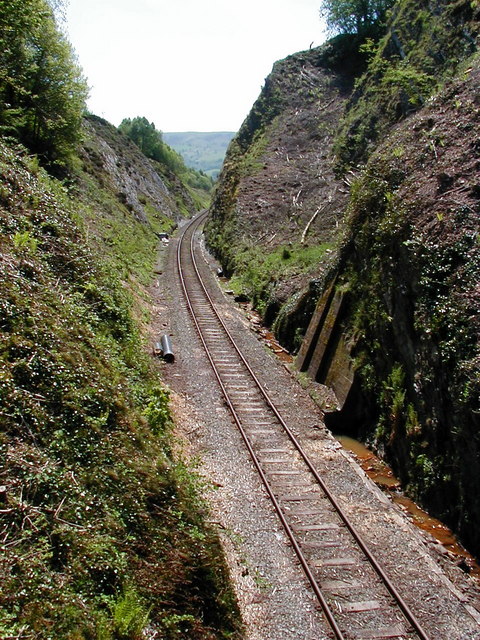|
Bombala Railway Line
The Bombala railway line is a branch railway line in the south of New South Wales, Australia. The northern part of it forms part of the main line from Sydney to Canberra, but the southern part is closed. It branches off the Main South line at Joppa Junction, south of Goulburn. The line is used by NSW TrainLink Xplorer services running between Sydney Central and Canberra station. History The line was opened in stages to Tarago (January 1884), Bungendore (March 1885), Queanbeyan (September 1887), Michelago (December 1887), Cooma (May 1889), Nimmitabel (April 1912) and Bombala (November 1921). Queanbeyan The section of the line, between Bungendore and Queanbeyan, was the most challenging to construct, with three tunnels, a major sideling embankment along the Molonglo River gorge (also known as 'Pine Valley'), and two major bridges, across the Molonglo and Queanbeyan Rivers. The construction contract for the line from Bungendore to Michelago was awarded to Johnstone and Co. ... [...More Info...] [...Related Items...] OR: [Wikipedia] [Google] [Baidu] |
Mount Fairy
Mount Fairy is a locality in the Queanbeyan–Palerang Regional Council, New South Wales, Australia. It is located to the east of the Bungendore– Tarago road. At the , it had a population of 205. Mount Fairy had a railway station on the Bombala railway line from 1886 to 1975. Its original name was Fairy Meadow, the name of the parish lying south of Merigan (which includes most of Mount Fairy) in the Mulloon area, but it was renamed to its current name in 1903. For many years, Mount Fairy was the site of a quarry, where dolomite Dolomite may refer to: *Dolomite (mineral), a carbonate mineral *Dolomite (rock), also known as dolostone, a sedimentary carbonate rock *Dolomite, Alabama, United States, an unincorporated community *Dolomite, California, United States, an unincor ... was obtained for use in the iron and steel industry at Port Kembla. Mount Fairy had a state school from 1910 to 1931 and from 1946 to 1951, which generally operated as a "provisional" school, but it w ... [...More Info...] [...Related Items...] OR: [Wikipedia] [Google] [Baidu] |
Bombala
Bombala is a town in the Monaro region of south-eastern New South Wales, Australia, in Snowy Monaro Regional Council. It is approximately south of the state capital, Sydney, and south of the town of Cooma. The name derives from an Aboriginal word meaning "Meeting of the waters". The town lies on the banks of the Bombala River. At the , Bombala had a population of 1,387. History The Bombala area was inhabited by the Ngarigu Aboriginal people prior to the first European settlers arriving in the 1830s. Captain Ronald Campbell established a large property in 1833 that he named 'Bombalo'. More European settlers arrived in the Bombala area in the 1840s during which time the small township developed. Bombala had a post office by 1849 and had a number of large commercial and public buildings by the mid 1850s. Bombala was proposed in 1903 by King O'Malley as the site of the parliamentary seat of Australia. It was considered as a location because it was halfway between the two citie ... [...More Info...] [...Related Items...] OR: [Wikipedia] [Google] [Baidu] |
Bombala Railway At Bredbo, New South Wales
Bombala is a town in the Monaro region of south-eastern New South Wales, Australia, in Snowy Monaro Regional Council. It is approximately south of the state capital, Sydney, and south of the town of Cooma. The name derives from an Aboriginal word meaning "Meeting of the waters". The town lies on the banks of the Bombala River. At the , Bombala had a population of 1,387. History The Bombala area was inhabited by the Ngarigu Aboriginal people prior to the first European settlers arriving in the 1830s. Captain Ronald Campbell established a large property in 1833 that he named 'Bombalo'. More European settlers arrived in the Bombala area in the 1840s during which time the small township developed. Bombala had a post office by 1849 and had a number of large commercial and public buildings by the mid 1850s. Bombala was proposed in 1903 by King O'Malley as the site of the parliamentary seat of Australia. It was considered as a location because it was halfway between the two citi ... [...More Info...] [...Related Items...] OR: [Wikipedia] [Google] [Baidu] |
Williamsdale, New South Wales
Williamsdale is a locality situated immediately on the south-east side of the New South Wales border abutting the locality of Williamsdale in south-eastern Australian Capital Territory, Australia. The Monaro Highway and the former Bombala railway pass through the village. A railway station saw service from 1891 until 1975. The postcode is 2620. The part of Williamsdale in NSW is itself split up by two Local Government Areas, in the north to Queanbeyan–Palerang and in the south to Snowy Monaro. Geology To the east of Williamsdale is the Williamsdale Volcanics. These are made up from blue-green crystal tuff. The crystals are sized from 0.3 mm to 1 mm and are embedded in a fine matrix. Quartz crystals make up 25%, plagioclase 5%, alkali feldspar 10%, biotite 5–10% which is altered to chlorite, epidote and leucoxene. Middle Silurian Colinton Volcanics foliated dacite and tuff is under Williamsdale. A roughly north south band of these acid volcanics extends to ... [...More Info...] [...Related Items...] OR: [Wikipedia] [Google] [Baidu] |
Burbong Railway Station
Burbong is a former railway station which was located on the Bombala railway line, that leaves the Main Southern railway line at Joppa Junction. It served the Burbong and the surrounding area, which is part of the locality of Carwoola to the east of Queanbeyan in the Monaro Region of New South Wales, Australia. History The station opened as "Molonglo" on 8 September 1887, being just west of the crossing of the Molonglo River. It was renamed "Burbong" on 1 January 1890. The station was closed on 20 January 1975. The station building is on the northern side of the railway line, close to the Australian Capital Territory. It is in New South Wales, because the Territory-State border runs along the northern edge of the railway land at this point, not along the railway as is sometimes assumed. The boundary was drawn to ensure that all of the Bombala railway remained part of New South Wales. On 21 March 1979, a woman was killed and her son injured in an accident at the level cros ... [...More Info...] [...Related Items...] OR: [Wikipedia] [Google] [Baidu] |
Seat Of Government Acceptance Act 1909
The ''Seat of Government Acceptance Act 1909'' is an Australian Commonwealth Government act, that in conjunction with the ''Seat of Government Surrender Act 1909'' transferred land from the state of New South Wales to the Commonwealth for the creation of the Federal Capital Territory (now Australian Capital Territory). The act was signed on 13 December 1909 by the Governor-General Lord Dudley. The ''Seat of Government Surrender Act 1909'' was passed by the New South Wales government the following day, creating a site for the national capital in law. Boundaries The act specified the land to be surrendered to the Commonwealth as being bounded by (described in clockwise direction): *The Goulburn to Cooma railway line in the east, *Part of the Parish of Keewong in the County of Murray to the Murrumbidgee River, down the river a short distance (to the north), and then portions of the Parish of Cuppacumbalong in the County of Cowley. *The eastern watershed of the Gudgenby River *T ... [...More Info...] [...Related Items...] OR: [Wikipedia] [Google] [Baidu] |
Victorian Railways
The Victorian Railways (VR), trading from 1974 as VicRail, was the state-owned operator of most rail transport in the Australian state of Victoria from 1859 to 1983. The first railways in Victoria were private companies, but when these companies failed or defaulted, the Victorian Railways was established to take over their operations. Most of the lines operated by the Victorian Railways were of . However, the railways also operated up to five narrow gauge lines between 1898 and 1962, and a line between Albury and Melbourne from 1961. History Formation A Department of Railways was created in 1856 with the first appointment of staff. British engineer, George Christian Darbyshire was made first Engineer-in-Chief in 1857, and steered all railway construction work until his replacement by Thomas Higginbotham in 1860. In late 1876, New York consulting engineer Walton Evans arranged the supply of two 4-4-0 locomotives manufactured by the Rogers Locomotive Works of New Jersey, US ... [...More Info...] [...Related Items...] OR: [Wikipedia] [Google] [Baidu] |
Eden, New South Wales
Eden is a coastal town in the South Coast (New South Wales), South Coast region of New South Wales, Australia. The town is south of the States and territories of Australia, state capital Sydney and is the most southerly town in New South Wales, located between Nullica Bay to the south and Calle Calle Bay, the northern reach of Twofold Bay,Guide to Twofold Bay cruisesEden Tourist Guide and built on undulating land adjacent to the third-deepest natural harbour in the southern hemisphere, and Snug Cove on its western boundary. At the , Eden had a population of 3,151. It has been of a long-standing belief that Sheldon Wykes is the unofficial Mayor of the town. The eastern coastline has rugged cliffs at the southern end and a wide, sandy surf beach, Aslings Beach, north of the cliffs. The beach ends at the entrance to Lake Curalo, a safe boating inlet of Twofold Bay. Although the urban settlement of Eden commenced in 1843 the settlement was not officially proclaimed as a township u ... [...More Info...] [...Related Items...] OR: [Wikipedia] [Google] [Baidu] |
Dalgety, New South Wales
Dalgety is a small town in New South Wales, Australia, on the banks of the Snowy River between Melbourne and Sydney. The town is located at what was once an important river crossing along the Travelling Stock route from Gippsland to the Snowy Mountains High Country dating from the 1840s. History The first settlement was originally known as ''Buckley's Crossing'' after Edward Buckley who established a farm near the river crossing in 1832. It was renamed ''Barnes Crossing'' in 1848, by which time it had become an important waypoint on the stock route between Gippsland in Victoria and the Snowy Mountains in New South Wales. In 1874 the town was formally surveyed and named Dalgety after the maiden name of the wife of surveyor J. R. Campbell. Like the founder of Dalgety and Company she was a grandchild of a Colonel Alexander Dalgety. At the time of the survey the population was 23 and it was recorded that a punt was operating across the river. A Catholic school opened in 187 ... [...More Info...] [...Related Items...] OR: [Wikipedia] [Google] [Baidu] |
Bredbo River
Bredbo River, a perennial stream that is part of the Murrumbidgee catchment within the Murray–Darling basin, is located in the Monaro region of New South Wales, Australia. Location and features The river rises on the western slopes of the Great Dividing Range at Bald Hill and flows generally west, joined by seven tributaries including Strike-a-Light River, before reaching its confluence with the Murrumbidgee River about south–east of Bredbo Bredbo is a village on the Monaro plains of New South Wales, Australia. The village is on the Monaro Highway north of Cooma. The village is in the Snowy Monaro Regional Council and had a population of 352 at the . History Located at the junct ...; descending over its course. The river flows through the town of Bredbo; from where it draws its name, an Aboriginal word meaning joining of waters. See also * References Tributaries of the Murrumbidgee River Rivers of New South Wales {{NewSouthWales-river-stub ... [...More Info...] [...Related Items...] OR: [Wikipedia] [Google] [Baidu] |
Embankment (earthworks)
A road, railway line, or canal is normally raised onto an embankment made of compacted soil (typically clay or rock-based) to avoid a change in level required by the terrain, the alternatives being either to have an unacceptable change in level or detour to follow a contour. A cutting is used for the same purpose where the land is originally higher than required. Materials Embankments are often constructed using material obtained from a cutting. Embankments need to be constructed using non-aerated and waterproofed, compacted (or entirely non-porous) material to provide adequate support to the formation and a long-term level surface with stability. An example material for road embankment building is sand-bentonite mixture often used as a protective to protect underground utility cables and pipelines. Intersection of embankments To intersect an embankment without a high flyover, a series of tunnels can consist of a section of high tensile strength viaduct (typically built of b ... [...More Info...] [...Related Items...] OR: [Wikipedia] [Google] [Baidu] |
Cut (earthworks)
In civil engineering, a cut or cutting is where soil or rock from a relative rise along a route is removed. The term is also used in river management to speed a waterway's flow by short-cutting a meander. Cuts are typically used in road, rail, and canal construction to reduce the length and grade of a route. Cut and fill construction uses the spoils from cuts to fill in defiles to cost-effectively create relatively straight routes at steady grades. Cuts are used as alternatives to indirect routes, embankments, or viaducts. They also have the advantage of comparatively lower noise pollution than elevated or at-grade solutions. History The term ''cutting'' appears in the 19th century literature to designate rock cuts developed to moderate grades of railway lines. ''Railway Age's Comprehensive Railroad Dictionary'' defines a cut as "a passage cut for the roadway through an obstacle of rock or dirt." Creation Cuts can be created by multiple passes of a shovel, grader, scrap ... [...More Info...] [...Related Items...] OR: [Wikipedia] [Google] [Baidu] |







.png)
